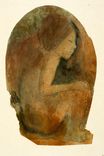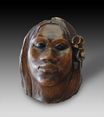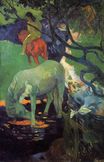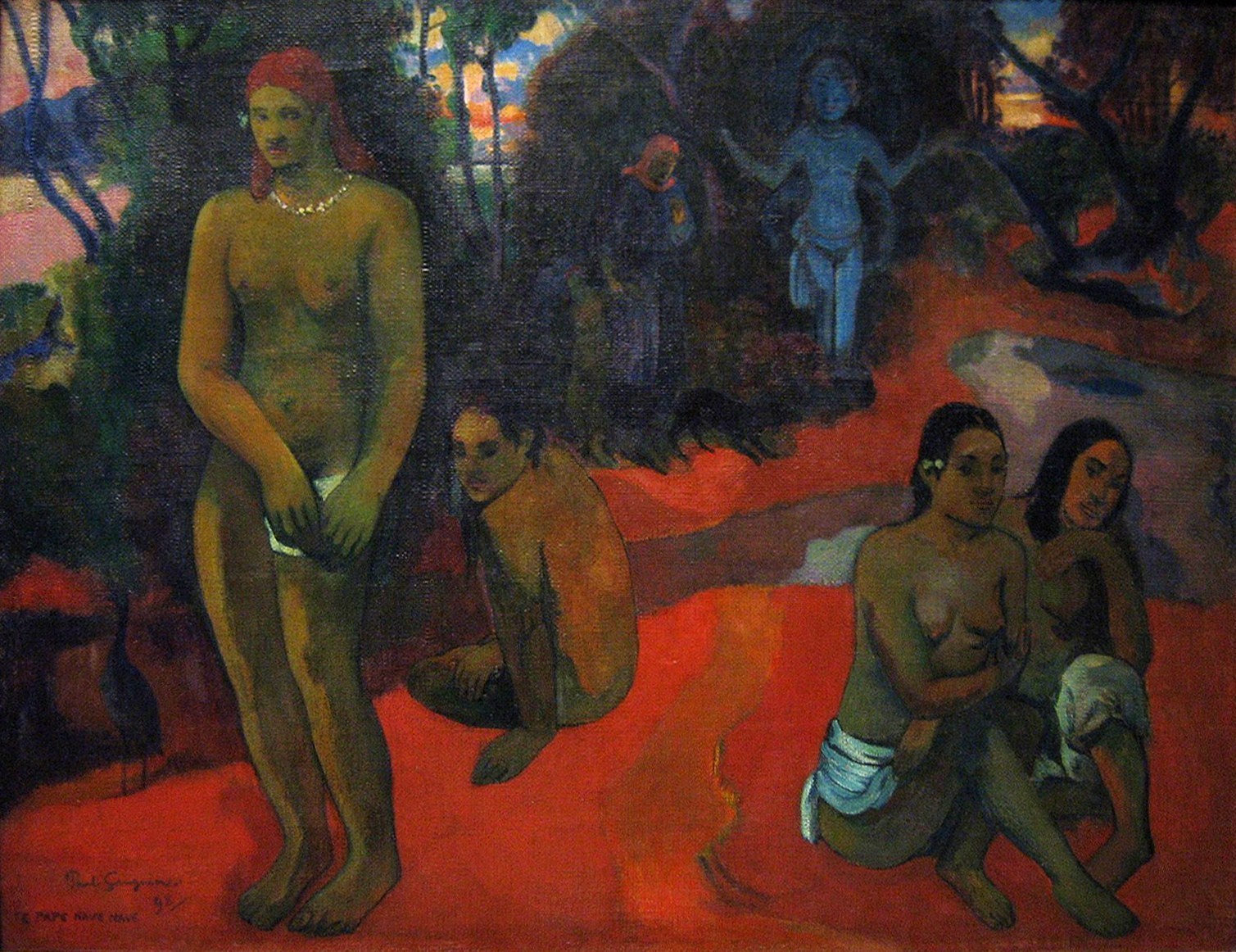Paul Gauguin - Te Pape Nave Nave. Delectable Waters 1898
 |
 |
 |
 |
 |
 |
 |

Delectable Waters. Te Pape Nave Nave 1898
74x95cm oil/canvas
National Gallery of Art, Washington, DC, USA
The image is only being used for informational and educational purposes
<< Previous G a l l e r y Next >>
From National Gallery of Art, Washington:
In 1898, Gauguin sent a group of works from Tahiti for exhibition in Paris. The centerpiece was a painting more than twelve-feet long on hemp sacking material with the French inscription, "Where do we come from? What are we? Where are we going?" (Museum of Fine Arts, Boston). Intended to be seen with it were eight smaller works based on motifs excerpted from Where are we going? These were not preparatory studies but variations painted after the larger work was completed. They represented a kind of rethinking or perhaps summing up by the artist. This painting is one of these smaller works.
One figure that recurs from the larger work is the blue goddess. She is the deity Hina, prominent in an ancient Polynesian creation myth, whom Gauguin represented in sculpture and painting repeatedly. Gauguin's interpretation of her appearance is based upon a variety of sources from Hindu and South Asian art and culture. Gauguin described Hina as an emblem of the "hereafter," alluding to both the cycles of life represented in the work (by the infant and old woman) and his stated intention that the grouping of work would be his final artistic statement. Experiencing numerous maladies, financial problems, and depression, he intended to commit suicide when the work was finished (he died several years later at age 54 from a variety of diseases he had contracted). Despite these seemingly explicit biographical interpretations, this painting and related canvases, like much of Gauguin's work, retain a sense of mystery. "Known symbols would congeal the canvas into a melancholy reality," he wrote, "and the problem indicated would no longer be a poem."